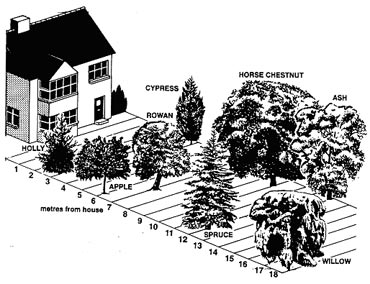Call us on+44 (0)1527 529809
Trees and Drainage, Sewerage or Sewage Treatment Systems
Where can you safely plant a tree? A good rule of thumb is never to allow a tree to grow higher than its distance from your house.

Trees in close proximity to structures can be hazardous due to their root systems affecting the foundations of the structure. This will be much more prevalent if the ground strata is clay.
When looking at trees and their proximity to drainage or sewerage systems, extra care must also be taken. Tree roots can be very fibrous and can easily enter drains or sewers, which then lead to the subsequent problems of trying to remove the roots. The usual reason roots enter the system is in search of water and if they can find evidence of water in the drains or sewers, then they will soon find a better way into the pipe, usually at cracks or joints.
Of course many pipeline systems are originally laid on gravel beds (and sometimes in gravel surrounds) which themselves are very good sources of water transmission, so that roots will frequently fill up the gravel bed or surround.
With sewage treatment systems, the tree roots can have severe effects on the structure of the system which has to be considered in the design and siting of the units, but there are other side effects which may contribute to the treatment process.
These are:
- Some polluting matter may fall from the trees into the treatment system, thereby affecting the treatment process. (This is particularly the case where lime trees are nearby.)
- When some trees shed their leaves in the autumn may cause blockages in the treatment or pipe systems.
With reed bed or other types of treatment systems, the shading of the ultraviolet rays by trees on the natural plant life could well result in a reduction of growth rate on those areas shaded.
SPE Limited
10 Kingfisher Business Park, Lakeside
Redditch, Worcestershire, B98 8LG
T 01527 529809
M 07850 399732
F 01527 524980
E info@spe.ltd.uk


© 2025 SPe Ltd | Privacy Policy | Quality Policy | Environmental Policy | Sitemap | Designed by SPE Ltd

